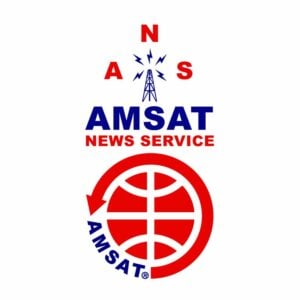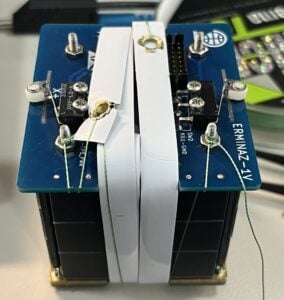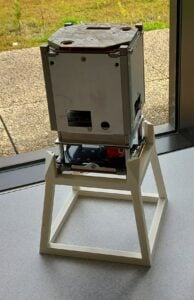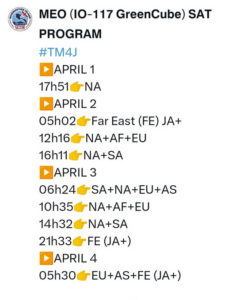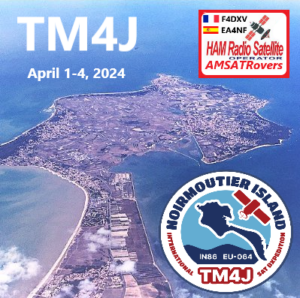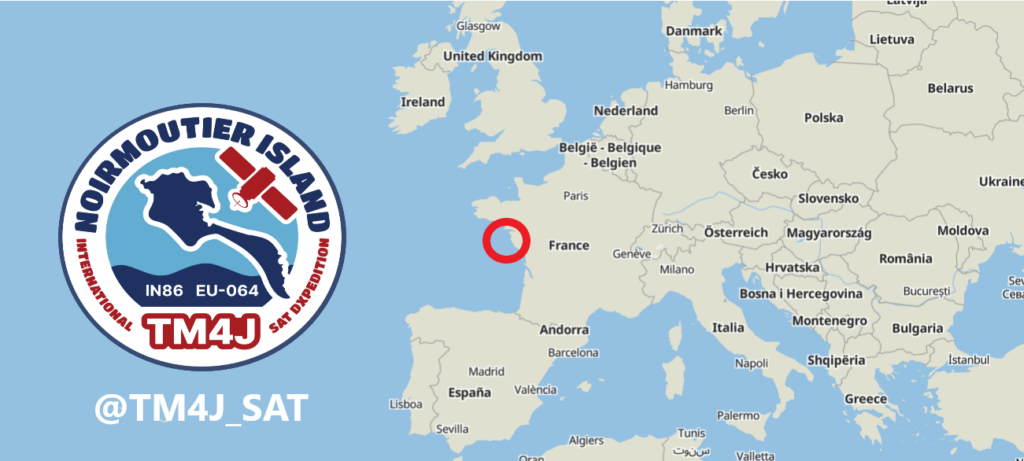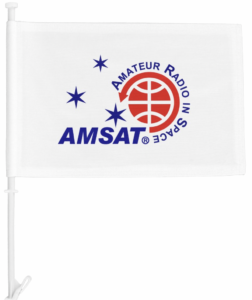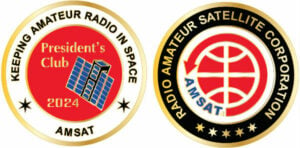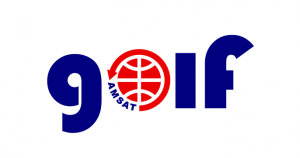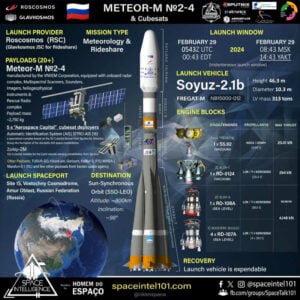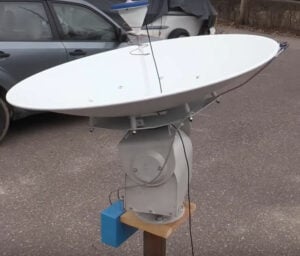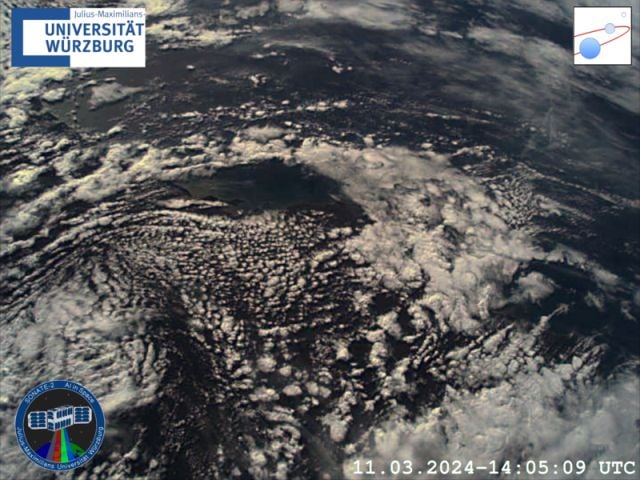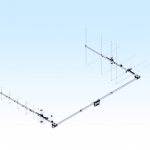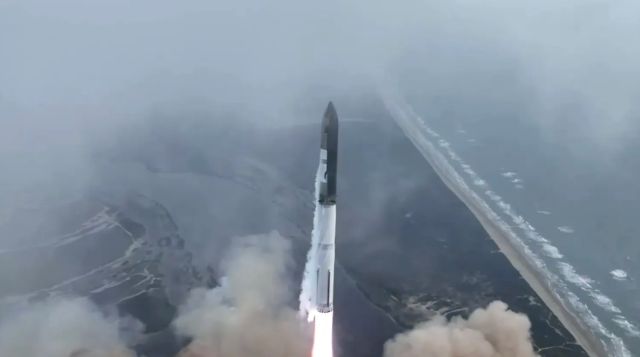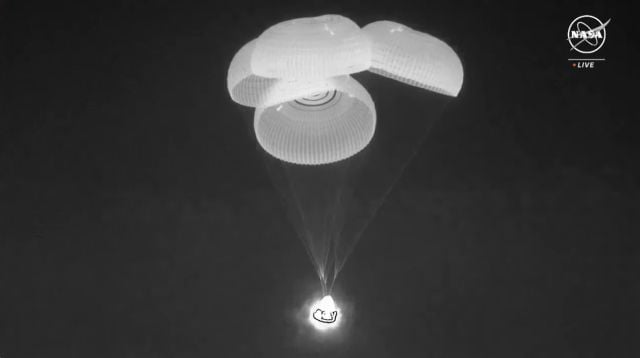In this edition:
* AMSAT Seeks Volunteers to Assist with 2024 Hamvention AMSAT Booth
* AMSAT AO-109 (Fox-1E) Satellite Sets New Processor Uptime Record
* ESA Unveils Proba-3 Mission: Artificial Solar Eclipses on Demand
* GridMasterMap Satellite Top 100 Rovers April 2024 Rankings
* Changes to AMSAT-NA TLE Distribution for April 5, 2024
* ARISS News
* Upcoming Satellite Operations
* Hamfests, Conventions, Maker Faires, and Other Events
* Satellite Shorts From All Over
The AMSAT News Service bulletins are a free, weekly news and information service of AMSAT, the Radio Amateur Satellite Corporation. ANS publishes news related to Amateur Radio in Space including reports on the activities of a worldwide group of Amateur Radio operators who share an active interest in designing, building, launching and communicating through analog and digital Amateur Radio satellites.
The news feed on https://www.amsat.org publishes news of Amateur Radio in Space as soon as our volunteers can post it.
Please send any amateur satellite news or reports to: ans-editor [at] amsat.org
You can sign up for free e-mail delivery of the AMSAT News Service Bulletins via the ANS List; to join this list see: https://mailman.amsat.org/postorius/lists/ans.amsat.org/
ANS-098 AMSAT News Service Weekly Bulletins
To: All RADIO AMATEURS
From: Radio Amateur Satellite Corporation
712 H Street NE, Suite 1653
Washington, DC 20002
DATE 2024 April 07
AMSAT Seeks Volunteers to Assist with 2024 Hamvention AMSAT Booth
With less than six weeks until the 2024 Dayton Hamvention, scheduled for May 17th to May 19th in Xenia, Ohio, excitement mounts for the 72nd installment of this premier gathering for ham operators worldwide. In 2023, attendance surged to 33,861, surpassing both the previous year and pre-pandemic records, indicating growing enthusiasm. The 2024 event, anticipated to draw even larger crowds, will also host the ARRL National Convention.
AMSAT, a key exhibitor, will once again occupy a spacious 1,200 square foot area at Building 1’s north end, known as the Maxim building. This location, ideally situated for its ventilation and access to the outdoor satellite ground station, is perfect for showcasing AMSAT’s exhibits. The booth will feature various attractions, including engineering team members, CubeSatSim, Beginner’s Corner, Youth Initiative, merchandise sales, software demonstrations, and membership sign-ups. Notably, this year’s booth will spotlight the revamped AMSAT Ambassador program, offering opportunities for engagement.
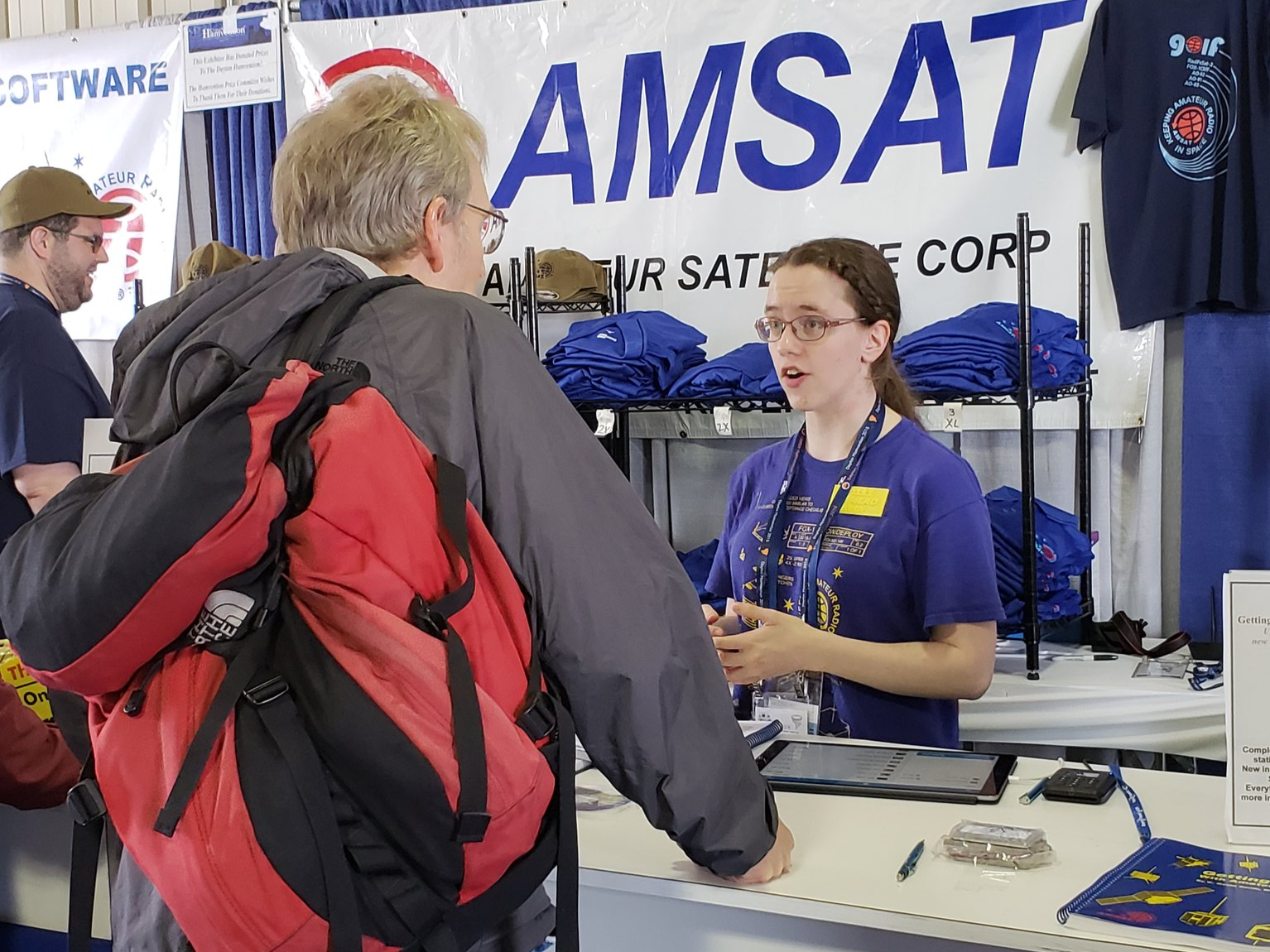
Aligned with this year’s theme of “Expanding our Community,” AMSAT aims to strengthen its presence by recruiting new members and volunteers. For those eager to be part of AMSAT’s presence at Dayton Hamvention or request more information about volunteering, Phil Smith, W1EME, AMSAT Hamvention Team Leader, serves as the point of contact. To volunteer or inquire further, individuals can reach out to Phil via email at w1eme [at] amsat.org. Your involvement not only enriches the event but also contributes to the vibrant amateur radio community.
[ANS thanks Phil Smith, W1EME, AMSAT Hamvention Team Leader, for the above information]
AMSAT AO-109 (Fox-1E) Satellite Sets New Processor Uptime Record
AMSAT’s AO-109, also known as Fox-1E, has recently achieved a remarkable milestone. Launched in January 2021, this satellite operates with an 8 mW signal, best suited for CW and FT4 communications among amateur radio enthusiasts. Recent telemetry data from the Dwingeloo Radiotelescope in The Netherlands has revealed an impressive feat: AO-109 has set a new record for processor uptime. This information was gathered by Alan Biddle, WA4SCA, who has meticulously monitored telemetry reports on a daily basis and calculated the duration of each reset, allowing for precise correlation of telemetry frames with UTC time.
The Fox satellites are designed to undergo onboard computer resets triggered by factors like radiation exposure and low battery voltage. Time on these satellites is measured by counting resets plus the duration since the last reset. It is common for the Fox satellites to reset every few days or weeks, especially when passing over the South Atlantic Anomaly. However, the processor on AO-109 has been running continuously since September 2023, accumulating over 18 million seconds of uptime—far surpassing any other Fox satellite.
Launched on January 17, 2021, as part of the ELaNa 20 mission using a LauncherOne rocket operated by Virgin Orbit, AO-109 was carried aloft by a modified Boeing 747 named “Cosmic Girl” from the Mojave Air and Space Port in California, United States. After reaching an altitude of approximately 35,000 feet (11,000 meters), the rocket was released into space. This launch, conducted under NASA’s CubeSat Launch Initiative program, marked the beginning of the satellite’s mission to facilitate amateur radio communications and technology research.
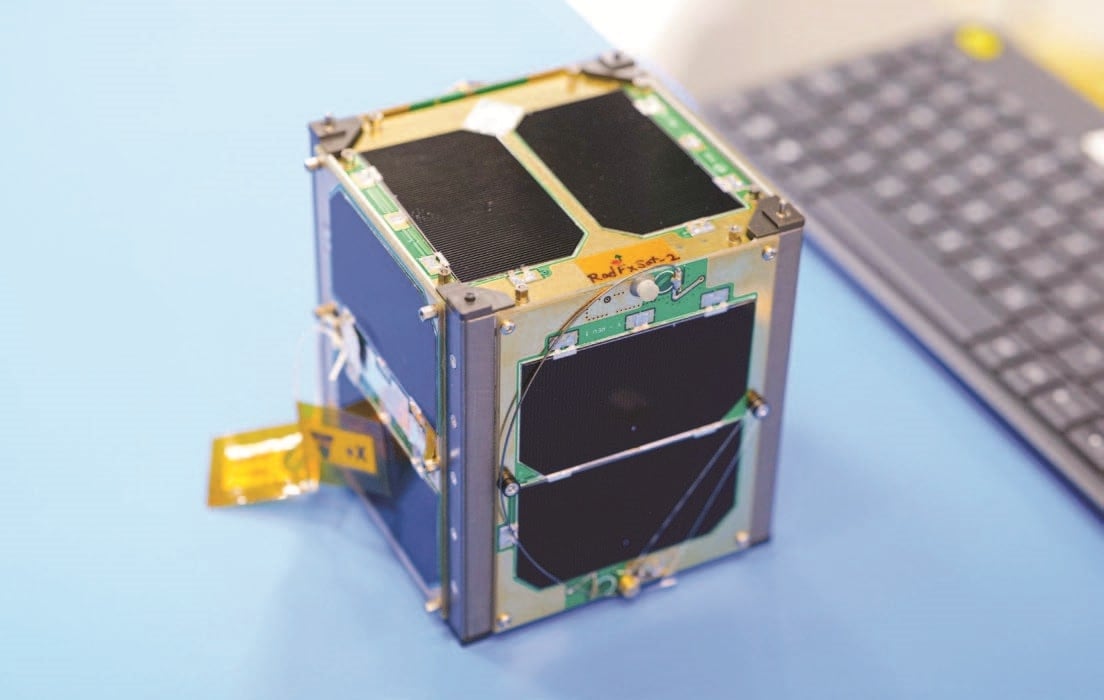
With its anticipated re-entry into Earth’s atmosphere in the coming weeks, users are encouraged to make the most of AO-109 while it’s still operational. Current reports suggest the satellite’s altitude is around 300 km, which is lower than the ISS orbiting altitude of 370–460 km.
[ANS thanks Burns Fisher, WB1FJ, and Alan Biddle, WA4SCA, for the above information]
The 2024 AMSAT President’s Club coins are here now!
Help Support GOLF and Fox Plus
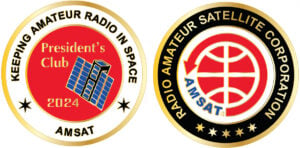 Join the AMSAT President’s Club today and help
Join the AMSAT President’s Club today and help
Keep Amateur Radio in Space!
https://www.amsat.org/join-the-amsat-presidents-club/
ESA Unveils Proba-3 Mission: Artificial Solar Eclipses on Demand
Next week, a celestial spectacle will unfold across North America as millions of people witness a total solar eclipse. Alongside eager spectators, solar physicists worldwide are gearing up for the event, drawn by the opportunity to study the Sun’s enigmatic corona, typically obscured by its intense luminosity. However, thanks to a innovative initiative by the European Space Agency (ESA), sustained examination of the solar corona will soon become feasible through the Proba-3 mission.
In Belgium last week, the European Space Agency revealed the spacecraft pair which constitute the Proba-3 mission. This initiative aims to generate orbital solar eclipses at will, providing researchers with extended periods to scrutinize the Sun’s ethereal corona. The mission comprises two spacecraft: the Occulter and the Coronagraph. Positioned approximately 150 meters apart, these spacecraft will align meticulously with the Sun, with the Occulter casting a shadow onto the Coronagraph, effectively blocking out the Sun’s glare and unveiling the corona.
Dietmar Pilz, ESA’s Director of Technology, Engineering, and Quality, explains, “The two spacecraft will act as if they are one enormous 150-meter-long instrument.” However, achieving such precision poses immense technical challenges. Even the slightest misalignment could disrupt the mission’s efficacy. Consequently, the development process, spearheaded by a consortium of ESA Member States led by Spain and Belgium, has been extensive.
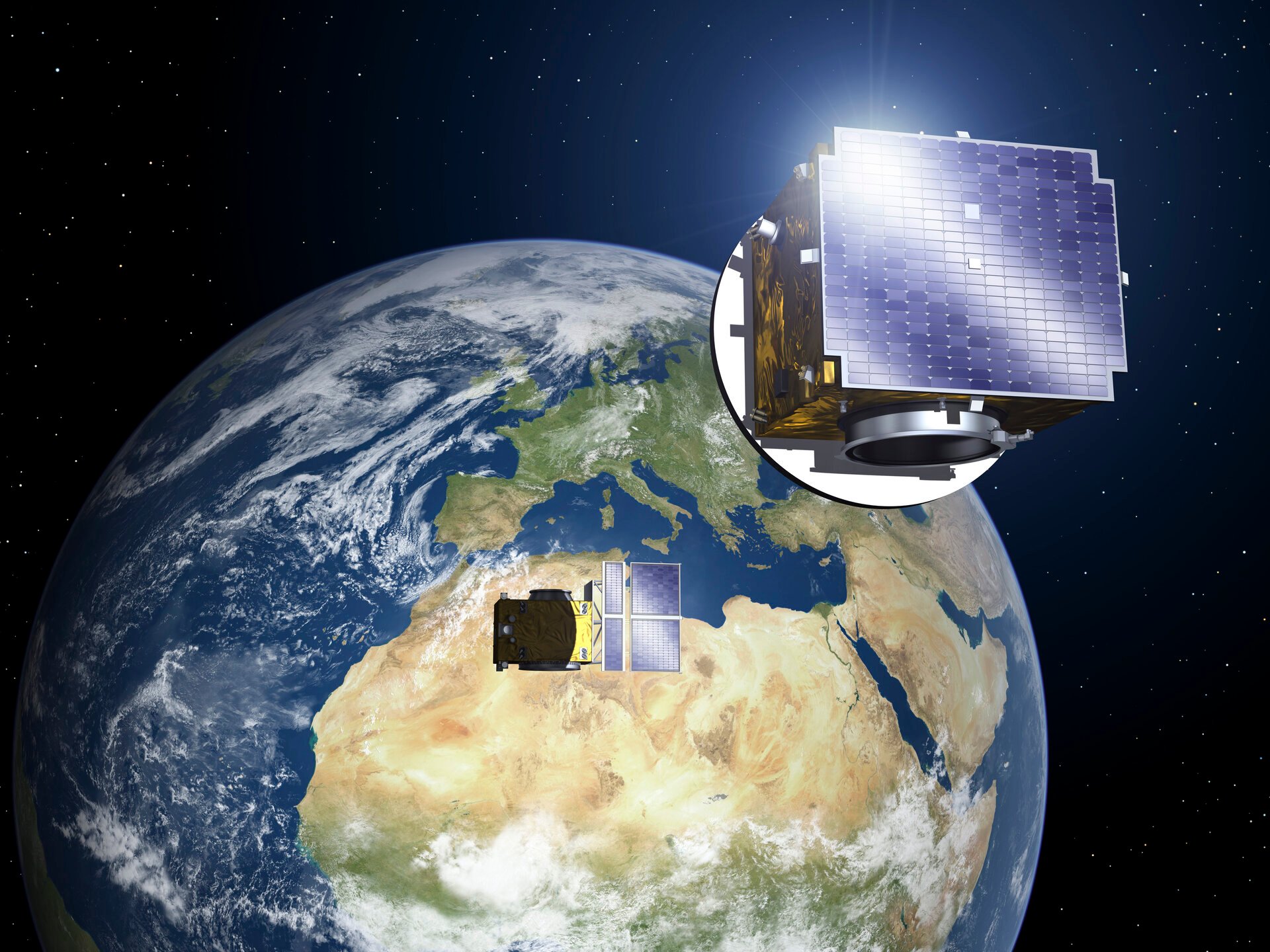
Solar eclipses, a consequence of the fortunate alignment of the Sun and the Moon, unveil the solar corona — a region of profound scientific and practical significance. Significantly hotter than the Sun’s surface, the corona influences space weather, solar wind, and phenomena like coronal mass ejections, which can impact satellite operations and terrestrial communications networks.
Proba-3’s groundbreaking approach involves orchestrating the Occulter and Coronagraph to operate as a unified entity, thus minimizing diffraction effects and maximizing the observation of the corona. This collaboration, facilitated by advanced positioning technologies, promises to unveil the mysteries of the corona within the range of 3 to 1.1 solar radii from the Sun.
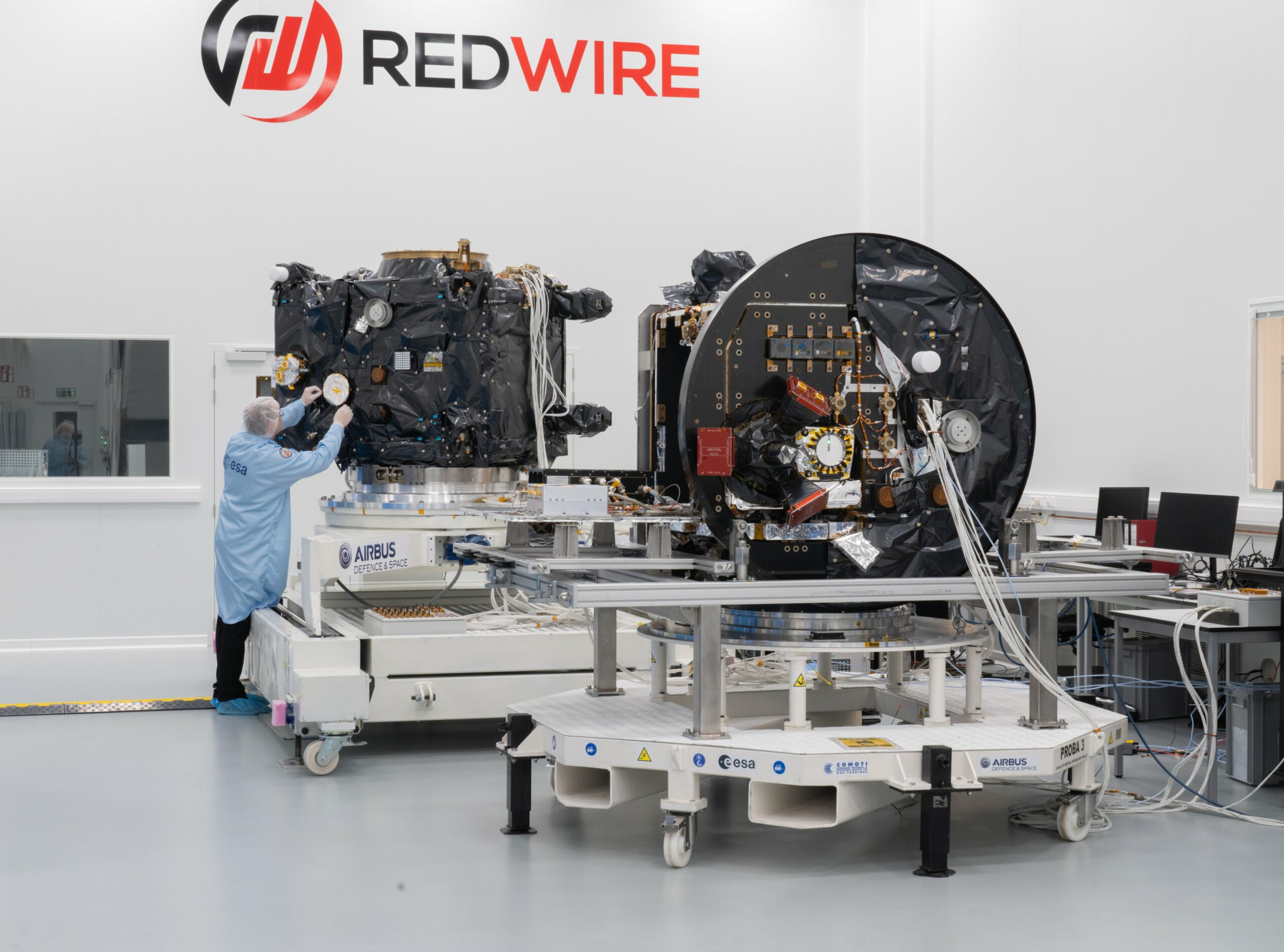
Beyond its scientific implications, the success of Proba-3 could herald a new era of space missions, facilitating endeavors like in-orbit satellite servicing and deploying larger-scale space infrastructure. Moreover, the mission’s instruments, like ASPIICS and the radiometer, hold promise for climate modeling and advancing our understanding of solar dynamics.
As the world awaits the North American total solar eclipse, members of Proba-3’s science team seize the opportunity to test mission hardware. Components like polarizing filter wheels and alternative LED technologies will undergo rigorous examination, further refining the mission’s capabilities.
[ANS thanks the European Space Agency for the above information]
GridMasterMap Satellite Top 100 Rovers April 2024 Rankings
The April 2024 rankings for the Top 100 Rovers (Mixed LEO/MEO/GEO) in satellite operations, as determined by @GridMasterMap on Twitter, has been released. The ranking is determined by the number of grids and DXCC entities activated, taking into account only those grids where a minimum number of QSOs logged on the gridmaster.fr website have been validated by a third party. Grid numbers do not directly reflect the exact number of activations. Satellite operators are encouraged to upload their LoTW satellite contacts to https://gridmaster.fr in order to provide more accurate data.
Updated: 2024-04-02
| 1 | ND9M | 26 | N5BO | 51 | SP5XSD | 76 | FG8OJ |
| 2 | NJ7H | 27 | K8BL | 52 | AD7DB | 77 | PT9BM |
| 3 | JA9KRO | 28 | LU5ILA | 53 | JL3RNZ | 78 | KJ7NDY |
| 4 | N5UC | 29 | KE4AL | 54 | F4DXV | 79 | KI7UXT |
| 5 | UT1FG | 30 | DL2GRC | 55 | KE9AJ | 80 | YU0W |
| 6 | OE3SEU | 31 | VE3HLS | 56 | KI7QEK | 81 | WA9JBQ |
| 7 | DL6AP | 32 | KB5FHK | 57 | PA3GAN | 82 | N4DCW |
| 8 | WI7P | 33 | KI7UNJ | 58 | N8RO | 83 | HB9GWJ |
| 9 | HA3FOK | 34 | LA9XGA | 59 | XE1ET | 84 | KB2YSI |
| 10 | K5ZM | 35 | F4BKV | 60 | KM4LAO | 85 | N0TEL |
| 11 | N6UA | 36 | N7AGF | 61 | VE1CWJ | 86 | VE3GOP |
| 12 | N9IP | 37 | JO2ASQ | 62 | SM3NRY | 87 | KI0KB |
| 13 | WY7AA | 38 | XE3DX | 63 | N4UFO | 88 | JM1CAX |
| 14 | W5PFG | 39 | K7TAB | 64 | VA3VGR | 89 | CU2ZG |
| 15 | AK8CW | 40 | KE0PBR | 65 | W1AW | 90 | K0FFY |
| 16 | AD0DX | 41 | KE0WPA | 66 | VA7LM | 91 | KG4AKV |
| 17 | DP0POL | 42 | N6DNM | 67 | PT2AP | 92 | AF5CC |
| 18 | WD9EWK | 43 | PR8KW | 68 | M1DDD | 93 | VE6WK |
| 19 | AD0HJ | 44 | AC0RA | 69 | DL4EA | 94 | W8MTB |
| 20 | ON4AUC | 45 | EB1AO | 70 | AA8CH | 95 | VE7PTN |
| 21 | KX9X | 46 | JK2XXK | 71 | N4AKV | 96 | DK9JC |
| 22 | KG5CCI | 47 | W7WGC | 72 | LU4JVE | 97 | K6VHF |
| 23 | ND0C | 48 | EA4NF | 73 | VE1VOX | 98 | N6UTC |
| 24 | DJ8MS | 49 | VK5DG | 74 | W8LR | 99 | PT9ST |
| 25 | F5VMJ | 50 | AA5PK | 75 | DF2ET | 100 | VO2AC |
[ANS thanks @GridMasterMap for the above information]
Need new satellite antennas?
Purchase an M2 LEO-Pack from the AMSAT Store! When you purchase through AMSAT, a portion of the proceeds goes towards
When you purchase through AMSAT, a portion of the proceeds goes towards
Keeping Amateur Radio in Space.
https://amsat.org/product-category/hardware/
Changes to AMSAT-NA TLE Distribution for April 5, 2024
Two Line Elements or TLEs, often referred to as Keplerian elements or keps in the amateur community, are the inputs to the SGP4 standard mathematical model of spacecraft orbits used by most amateur tracking programs. Weekly updates are completely adequate for most amateur satellites. TLE bulletin files are updated daily in the first hour of the UTC day. New bulletin files will be posted immediately after reliable elements become available for new amateur satellites. More information may be found at https://www.amsat.org/keplerian-elements-resources/.
The following satellite has been removed from this week’s AMSAT-NA TLE distribution:
XW-2F NORAD Cat ID 40910 Decayed from orbit on or about 01 April 2024
[ANS thanks AMSAT Orbital Elements page for the above information]
ARISS NEWS
Amateurs and others around the world may listen in on contacts between amateurs operating in schools and allowing students to interact with astronauts and cosmonauts aboard the International Space Station. The downlink frequency on which to listen is 145.800 MHz worldwide.
+ Recently Completed Contacts
Embry-Riddle Aeronautical University, Daytona Beach, FL, direct via NN4ER
The ISS callsign was NA1SS
The crewmember was Matthew Dominick KCØTOR
The ARISS mentor was AJ9N
Contact was successful: Wed 2024-04-03 15:22:17 UTC
Watch the contact at https://portal.stretchinternet.com/eraudaytona/portal.htm?eventId=754085&streamType=video
Congratulations to the Embry-Riddle Aeronautical University students, Matthew, NN4ER, mentor AJ9N!
Ryazan State Radio Engineering University, Ryazan, Russia, direct via RK3SWB (***)
The ISS callsign was RSØISS
The crewmember was Oleg Novitskiy
The ARISS mentor was RV3DR
Contact was successful for Wed 2024-04-03 12:30 UTC
Congratulations to the Ryazan State Radio Engineering University students, Oleg, RK3SWB, and mentor RV3DR!
Aznakaevsky District students, Tatarstan, Russia, direct via RC4P
The ISS callsign was RSØISS
The crewmember was Aleksandr Grebyonkin RZ3DSE
The ARISS mentor was RV3DR
Contact was successful: Thu 2024-04-04 10:10 UTC
Congratulations to the Aznakaevsky District students, Aleksandr, mentor RV3DR, and RC4P!
University College of the Immanuel Kant Baltic Federal University, Kaliningrad, Russia, direct via R2FDB
The ISS callsign was RSØISS
The crewmember was Marina Vasilevskaya
The ARISS mentor was RV3DR
Contact was successful: Thu 2024-04-04 13:19 UTC
Congratulations to the University College of the Immanuel Kant Baltic Federal University students, Marina, mentor RV3DR, and R2FDB!
Collège Théodore Monod, Gagny, France, direct via TM2ISS
The ISS callsign was OR4ISS
The crewmember was Matthew Dominick KCØTOR
The ARISS mentor was F6ICS
Contact was successful: Thu 2024-04-04 14:51:07 UTC
Congratulations to the Collège Théodore Monod students!
+ Upcoming Contacts
Volga State University, Russia, direct via TBD
The ISS callsign is presently scheduled to be RSØISS
The scheduled crewmember is Aleksandr Grebyonkin RZ3DSE
The ARISS mentor is RV3DR
Contact is go for Sun 2024-04-07 09:20 UTC
Tooele County School District, Tooele, UT, direct via W7CBL
The ISS callsign is presently scheduled to be NA1SS
The scheduled crewmember is Mike Barratt KD5MIJ
The ARISS mentor is AJ9N
Contact is go for: Mon 2024-04-08 17:45:07 UTC
ARTADEMIA, Milano, Italy, AND Scuola Secondaria I grado “A. Moro”, Ponte Lambro (CO), Italy, direct via IK1SLD
The ISS callsign is presently scheduled to be OR4ISS
The scheduled crewmember is Jeanette Epps KF5QNU
The ARISS mentor is IZ2GOJ
Contact is go for: Wed 2024-04-10 13:16:48 UTC
The crossband repeater continues to be active (145.990 MHz up {PL 67} & 437.800 MHz down). If any crewmember is so inclined, all they have to do is pick up the microphone, raise the volume up, and talk on the crossband repeater. So give a listen, you just never know.
The packet system is also active (145.825 MHz up & down).
As always, if there is an EVA, a docking, or an undocking; the ARISS radios are turned off as part of the safety protocol.
Note, all times are approximate. It is recommended that you do your own orbital prediction or start listening about 10 minutes before the listed time.
The latest information on the operation mode can be found at https://www.ariss.org/current-status-of-iss-stations.html
The latest list of frequencies in use can be found at https://www.ariss.org/contact-the-iss.html
[ANS thanks Charlie Sufana, AJ9N, one of the ARISS operation team mentors for the above information]
Upcoming Satellite Operations
EL, LIBERIA: Satellite activations include RS-44, IO-117, and QO-100
The Czech DXpedition Team (Petr/OK1BOA, Palo/OK1CRM, Petr/OK1FCJ,
Pavel/OK1GK, Ruda/OK2ZA, Ludek/OK2ZC, Karel/OK2ZI, and David/OK6DJ)
signs A8OK between April 9 and 16 from Liberia. QRV on 160-6m (CW,
SSB, RTTY, PSK, FT8/4) and via satellite. For more information see:
https://www.cdxp.cz and https://www.facebook.com/groups/1472348776313779
QSL via OK6DJ OQRS or via LoTW.
(Thanks to DXNL 2400 – April 3, 2024 DX Newsletter)
A growing number of satellite rovers are currently engaged in sharing their grid square activations on https://hams.at. By visiting the website, you gain easy access to comprehensive information about the operators responsible for activating specific grid squares. Additionally, you have the ability to assess the match score between yourself and a particular rover for a given pass, while also being able to identify the upcoming satellite passes that are accessible from your location.
[ANS thanks Ian Parsons, K5ZM, AMSAT Rover Page Manager, for the above information]
Hamfests, Conventions, Maker Faires, and Other Events
AMSAT Ambassadors provide presentations, demonstrate communicating through amateur satellites, and host information tables at club meetings, hamfests, conventions, maker faires, and other events.
2024 CubeSat Developer’s Workshop
Tuesday April 23rd – Thursday April 25th
Cal Poly, San Luis Obispo, CA
https://www.cubesatdw.org/
Dayton Hamvention 2024
Friday May 17th – Sunday May 19th
Greene County Fairgrounds and Expo Center
120 Fairground Road
Xenia, OH 45385
https://hamvention.org
Want to fly the colors on your own grid expedition?
Get an AMSAT car flag and other neat stuff from our Zazzle store!
25% of the purchase price of each product goes towards Keeping Amateur Radio in Space
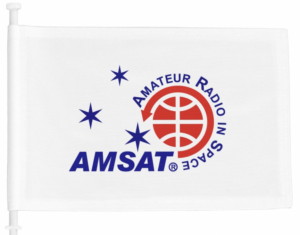 Keeping Amateur Radio in Space
Keeping Amateur Radio in Space
https://www.zazzle.com/amsat_gear
Satellite Shorts From All Over
+ NASA will launch three scientific-sounding rockets into the moon’s shadow on April 8 during a partial solar eclipse across North America, coinciding with a total solar eclipse in certain areas. The project, named Atmospheric Perturbations Around The Eclipse Path (APEP), aims to investigate how the sudden drop in sunlight and temperature during the eclipse affects Earth’s upper atmosphere. Named after the serpent deity from ancient Egyptian mythology, APEP will involve rockets launched from Wallops Flight Facility in Virginia. These rockets, equipped with secondary instruments, will measure changes in electric and magnetic fields, density, and temperature as they penetrate the ionosphere during the eclipse. Understanding these perturbations in the ionosphere is crucial for predicting disturbances that impact satellite communications and ensuring the smooth operation of our communication-dependent world. (ANS thanks Jamie Carter, Senior Contributor, Forbes, for the above information)
+ The final launch of United Launch Alliance’s Delta Heavy IV rocket is scheduled for April 9, marking the end of a 64-year legacy for the Delta family. The highly successful career of the Delta Heavy IV comes to a close as it launches a classified payload, NROL-70, on behalf of the U.S. National Reconnaissance Office (NRO). The NRO, responsible for the country’s surveillance satellites, maintains secrecy about the specifics of its missions. This final launch aims to enhance the NRO’s capabilities in providing intelligence to national decision-makers and supporting global humanitarian efforts. United Launch Alliance plans to retire both the Delta IV Heavy and the Atlas V to pave the way for its new Vulcan Centaur rocket, with the Atlas V scheduled for missions until 2029. The era of the Delta family concludes amidst a transition towards more advanced launch technologies and capabilities. (ANS thanks Brett Tingley, Managing Editor, Space.com, for the above information)
+ Despite facing numerous challenges, including malfunctioning temperature sensors and unused battery cells, Japan’s SLIM Moon lander has defied expectations by surviving a second lunar night, despite being in a precarious position with its thrusters pointed upward and solar arrays facing away from the Sun. The Japan Aerospace Exploration Agency (JAXA) received a signal from the lander indicating it had restarted after hibernating to avoid freezing temperatures on the Moon’s surface. Initially forced to shut down due to insufficient electricity generation from its solar cells, SLIM has persisted against the odds, reviving itself twice since its landing on January 19. Although not designed to endure the Moon’s harsh conditions, the lander has continued to function, prompting uncertainty about JAXA’s future plans for the resilient spacecraft after it successfully achieved its primary mission goal of a precise lunar landing within a 328-foot radius. (ANS thanks Passant Rabie, Gizmodo, for the above information)
+ China’s Queqiao-2 satellite successfully launched from the Wenchang Space Launch Site on March 20th, reaching lunar orbit after a perilune braking maneuver near the Moon’s surface on March 24th. Positioned to relay communications for future lunar missions, including Chang’e-4 and Chang’e-6, Queqiao-2’s orbit will be adjusted to facilitate these missions and support China’s ambitious lunar exploration program. Accompanying experimental satellites, Tiandu-1 and -2, also entered lunar orbit, conducting tests in communication and navigation. Queqiao-2’s strategic orbit placement in the Moon’s maria region holds significance for China’s lunar exploration history, including past probe landings fifteen years ago on March 1, 2009. China’s lunar missions, aiming to scout resources and establish a lunar base, signify a substantial endeavor parallel to NASA’s Artemis Program, which plans to establish a sustained presence on the Moon with international collaboration. (ANS thanks Matt Williams, Universe Today, for the above information)
Join AMSAT today at https://launch.amsat.org/
In addition to regular membership, AMSAT offers membership to:
* Societies (a recognized group, clubs or organization).
* Primary and secondary school students are eligible for membership at one-half the standard yearly rate.
* Post-secondary school students enrolled in at least half-time status shall be eligible for the student rate for a maximum of 6 post-secondary years in this status.
* Memberships are available for annual and lifetime terms.
Contact info [at] amsat.org for additional membership information.
73 and remember to help Keep Amateur Radio in Space!
This week’s ANS Editor, Mitch Ahrenstorff, ADØHJ
ad0hj [at] amsat.org

